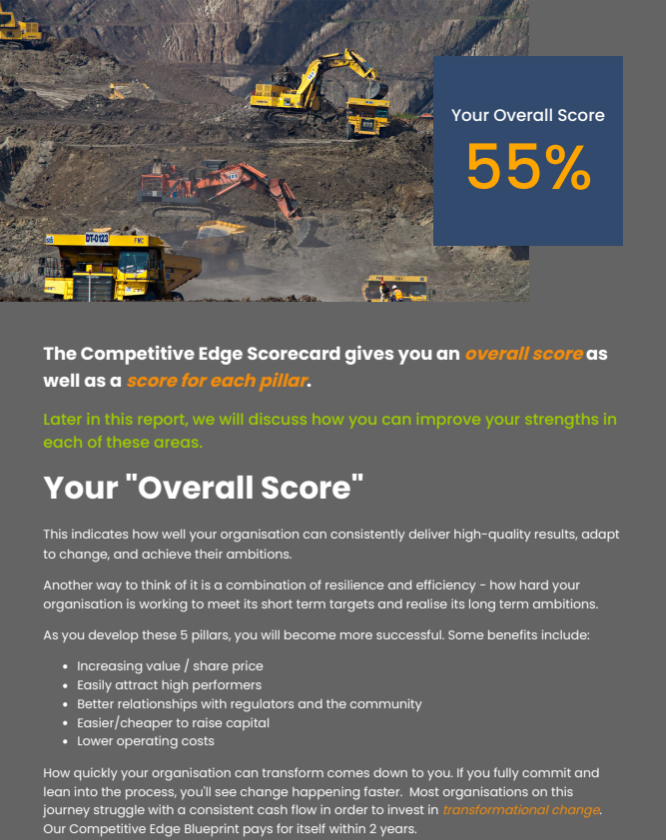This year we brought together a number of the best systems, methods and tools in a more formal way than usual. It all adds up to a seamless process that cascades down both the organisation’s hierarchy as well as long to short-term time horizons known as STARR (Strategy, Tactics, Action, Review, Results).
“But why bother?”, I hear you ask. Good question, like you, we like to keep things as simple as we can. The answer is that all organisations need to move forward with purpose while continuing to fulfil their day-to-day obligations. And we all know that that’s easier said than done. We tend to get sucked into the vortex of the daily grind, making it nigh on impossible to focus on the week ahead, let alone the month and the year.
Enter STARR. It starts with the business’ Senior Leadership Team developing a sound, longer-term (say a minimum of 5 years) strategy. This may be captured in an easy-to-communicate single-page document (with more details behind the summary as required).
That said, there are a few keys to successfully implementing your newly-minted strategy. Firstly, it requires to be turned into smaller, actionable projects and secondly, it necessitates periodic focus. Also, a great way to keep on top of your projects is by using Gantt charts. We deployed SmartSheet for simplicity, low cost and clarity. But guess what: if not actively managed Gantt charts can gather dust more quickly than you can say “first quarterly review”. To eliminate this risk, at our STARR client site, we implemented a formal review of project status on a monthly basis.
But to truly keep on top of your projects, more is required. During the monthly project status review, smaller tasks and actions are further ‘peeled out’ and dropped into a team collaboration tool. On our recommendation, our client chose Trello with an enormous amount of uptake and success, due to its friendly and non-threatening (dare I say funky!) board-list-card metaphor. The managers share regular status updates with each other, their teams and their boss for a much-improved degree of transparency regarding what everyone is working on. Remotely working team members are better catered for, as they can participate in a conference call and not miss a second of the action happening in real time on their screens using this web-based solution. If need be they can even use a mobile platform (iPads, iPhones, Android and Windows are all options available).
All this effort has resulted in ‘hard’ (tangible) and ‘soft’ (people-related) benefits:
- Getting more of the important tasks done – ‘on time, in full’
- Much more accountability among individuals and teams
- Stronger alignment on priorities that impact multiple departments
- Greater transparency on all managed activities, less conflict on the cross-functional integration points
- Simpler, clearer communication and stronger relationships all around:
- Vertically: GM and his managers, managers and their own reports
- Horizontally: Managers/Superintendents and their peers
- Standardised processes lead to less duplication, shared learnings, and clear expectations
As mentioned earlier, it is important that some parts of STARR are treated with a higher degree of formality, with agreed and documented processes, that are subject to review from time to time.
- Fit-for-purpose, user-friendly technology that enables the team to collaborate with less friction is also a key part of making it work (kiss those clunky excel lists goodbye!).
- An understanding that it is the processes and the rules around them that are more important than the supporting technology.
And finally, as always, there is no substitute for management commitment. In times of change, it is important to keep steadfast until the ‘new order’ has been established. And, as Kotter has been telling us for years, ‘never let up’!


